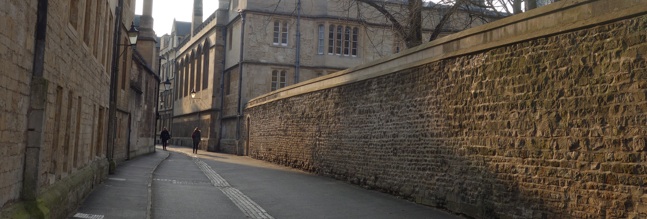
Let’s be honest, Oxford is Oxford because of its university. Tourists don’t flock from around the world for the city’s wild nightlife (although they should – it’s not that bad). Visiting the age-old educational structure can be a tricky business, however. As anyone who has forlornly asked “Which way to the University?” at Oxford station can tell you, the answer is not that simple.
Oxford University is a collegiate university, which means it is split up into different college bodies. Students eat, sleep, study and are taught in their colleges, and these structures form as much a part of their university identity as the Oxford tag. Colleges range from the super old (over 700 years!) to the modern - well, modern by Oxford’s standards - and each hides a mixture of stunning architecture and beautiful gardens. Some colleges, however, are just that little bit more stunning and more beautiful than others. So here are our top tips on touring the Oxford colleges.
Established Favourites
There are some colleges that you have to visit if you want to see Oxford University. Christ Church is Oxford’s grandest college, and its 16th century architecture and central quadrangle—Tom Quad—are about as stately as any you can find. For Harry Potter fans, Christ Church’s dining hall was used as the set for dining hall of Hogwarts, and the college’s cloisters appear briefly in the Harry Potter and The Philosopher’s Stone. Entrance is £7 for adults and £6 for children. Another Harry Potter site is New College: its cloisters appear in the Goblet of Fire. Despite its name, New College was actually founded in 1379, and remnants of the city’s medieval walls run along the side of the college’s grounds. Also worth discovering is New’s chapel, a giant, ornate sanctuary with a rear wall composed almost entirely with statues of saints.
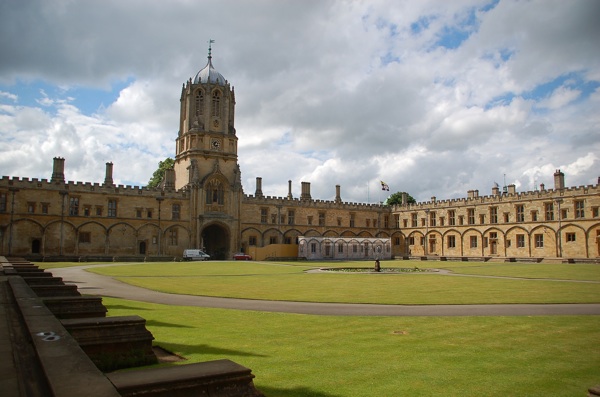
Toms Quad, Christ Church. Photo Credit: Gautier Poupeau
Another grand college in Oxford is Magdalen College. Magdalen feels more like a country estate, and its grounds contain a deer park and a huge complex of gardens amid the city’s waterways. Visit in the summer and you will find students playing croquet on their back lawns - a pretty idyllic site all round. Finally, All Souls College has to be seen. The most ivory of ivory towers, All Souls admits two students on average a year, and only post-graduates. It’s known for its secrecy and exclusivity, and its alumni include Thomas Edward Lawrence - a.k.a Lawrence of Arabia - who supposedly wanted his gravestone to read “Say only that I went to All Souls.†The college houses an exquisite set of quadrangles, and maybe the most ornate library in the world.
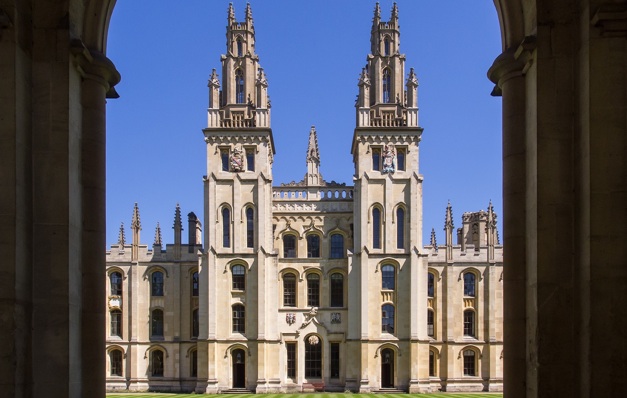
All Souls College. Photo Credit: Ed Webster
Hidden Gems
Away from the well-trodden paths, there are plenty of underrated colleges that will reward your visit. Worcester College off to the west of the Oxford centre has a claim to be Oxford’s most picturesque spot. The college’s peaceful grounds contain a lake, and in summer, performances are staged on the water (!!) with the audience mooring up in boats. The college is free to visit between 2pm and 4pm, and there are few better places in Oxford to enjoy a summer’s day. St Catherine’s College—or Catz as it is more commonly known—is often overlooked by visitors. One of the university’s newest colleges, Catz’s spacious grounds contains some stunning examples of 60s block architecture and back out onto the Cherwell river. No it’s not Brideshead, but it’s still beautiful. A similarly overlooked spot is Exeter College. Exeter celebrated its 700th anniversary two years ago, and its garden holds one of the best views in Oxford overlooking Radcliffe Camera square. Other sites to see in Exeter is their George Gilbert Scott-designed chapel, with its towering spire, and the 17th Century dining hall replete with a portrait of Charles I, a former benefactor to the college.
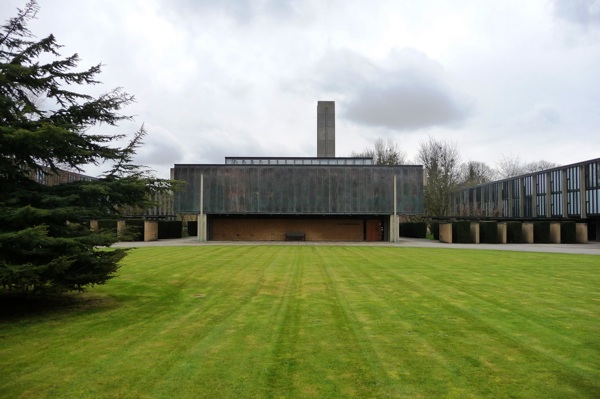
St Catherine’s College. Photo Credit: John Lord
Non-Collegiate Buildings
There is more to Oxford University than the colleges. Many of the faculty buildings and libraries are equally ornate and equally worth a visit!
The Bodleian Library is one of Oxford University’s crown jewels. It’s a copyright library, meaning it receives one copy of every book published in the UK - and as this might indicate, it’s a pretty huge, with separate sites spread across the city. The Radcliffe Camera is the library’s grandest building. A huge dome right in the centre of Oxford, it is the postcard spot for those looking for well-placed selfies. Right next door is the Bodleian Quadrangle, the oldest section of the library, an ornate courtyard where you will literally be surrounded by books. You can visit inside the library’s Divinity Schools. This immensely decorate chamber was used by Charles I during the Civil War as a proxy court, and is more recognisable as the set for the Hogwarts’ Hospital Wing in the Harry Potter Films.
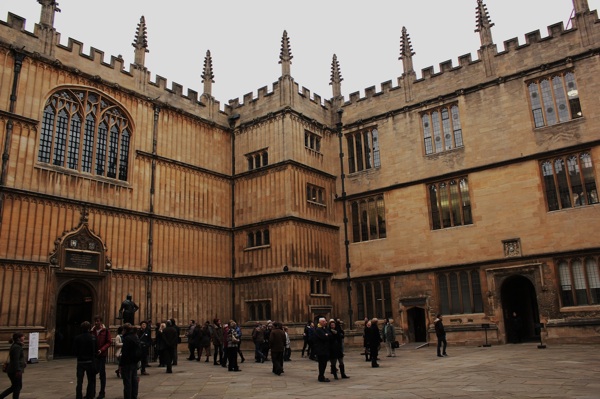
Old Bodleian Quadrangle. Photo Credit: Tim Sheerman-Chase
Continue just round the corner to find the Sheldonian Theatre. This grand auditorium was built by Sir Christopher Wren, the architect of St Paul’s Cathedral. Its hall hosts the university’s graduation ceremonies as well as a string of important talks and concerts throughout the year. Crossing the busy Broad Street, you find one of Oxford University’s newest editions the Weston Library. This classically designed building actually only opened a few years ago, and houses many of the universities oldest and rarest texts. Visitors can enter their exhibition gallery and learn more about the Bodleian and an array of strange research subjects.
That’s it: a guide to visiting Oxford University. Enjoy all its reveries without any of the hard work!